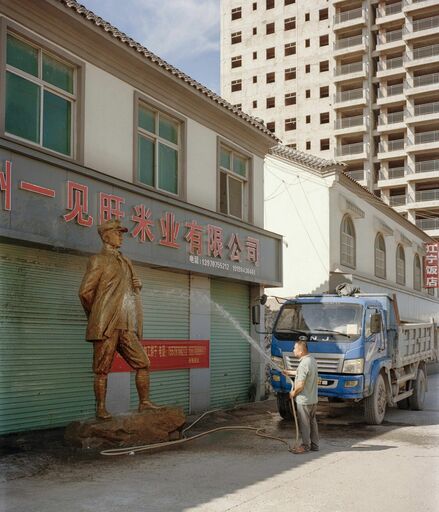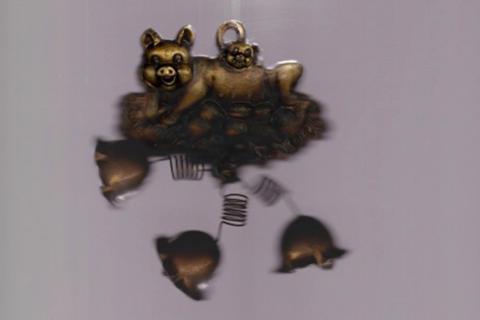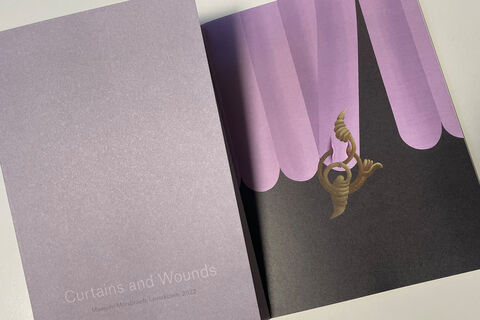- Exhibition
- Awards
- Library
- Speech
- edition KHM
- Festival / Award ceremony
- FG exMedia
- FG Film und TV
- FG Kunst
- FG Kunst- und Medienwissenschaften
- Movie screening
- Glasmoog Books
- Glasmoog - Raum für Kunst und Diskurs
- KHM Journal
- Concert
- Cooperation
- LAB Jahrbuch
- LECTURE Reihe
- Teachers elsewhere
- literature
- off topic
- News articles
- Publications
- Job offers
- Study
- TV broadcast
- Event
- all
Nomination of Zexuan Zeng at Paris Photo / Carte Blanche Students

Paris Photo, the Picto Foundation and SNCF Gares & Connexions have announced the opening of the application phase for the 8th edition of Carte Blanche Students.
Ausstellung: 13. bis 16. November 2025
Grand Palais, Paris
A jury of experts has selected 20 finalists from the applications received. Among them is Zenxuan Zeng with his photo series ‘The Internal Crusade’, which was created as his diploma thesis at the Academy of Media Arts Cologne (KHM).
Four winners will be selected from among the 20 finalists, whose works will be exhibited at the Paris Photo fair, including a portfolio created in collaboration with Hahnemühle, as well as in a large Parisian train station. One of the four winners will receive the Saif Carte Blanche Students scholarship to carry out a project.
Carte Blanche Students is a programme created by the Picto Foundation, Paris Photo and SNCF Gares & Connexions with the support of Saif and La Copie Privée.
Zexuan Zeng (*1997) was born in eastern South China and began studying visual communication at Shanghai Normal University (SHNU) in 2015. A year later, he began working as a freelance artist and designer. In 2021, he moved to Germany to study at the Academy of Media Arts Cologne (KHM), where he graduated in 2025 with his thesis ‘The Internal Crusade’. Zeng is actively involved in photography, writing, video and graphic design. His artistic interest lies in controlling the emotional flow in photography, particularly in relation to the boundaries between documentation and fiction, as well as the self-referential nature of memory. His work has been exhibited in various countries, including China, Germany and Japan.
The Internal Crusade, selected for Carte Blanche Students:
In 1934, the Communist Party found itself in a life-threatening situation due to several siege operations by the Kuomintang and decided to flee the former CSR (Chinese Soviet Republic, 1931–1937). They broke out of southern Jiangxi and headed west, travelling to Yunnan, turning north and finally reaching Shanxi. This journey took a year and covered almost the whole of China. At the time of departure, almost 86,000 people belonged to the Red Army – only about 8,000 survived. The leaders at that time later formed the first cabinet of the new People's Republic of China. This episode is known as the ‘Long March’.
‘I was born and raised in Ganzhou, Jiangxi – the heart of the former CSR – where the Long March begins. ’The Communist Party was born here," it is often said. Patriotic education filled all my schoolbooks, and party symbols with red stars and signs about the Long March could be seen on almost every street corner. As I grew older, the return of Hong Kong, the one-child policy, the earthquake, the Olympics and the recent Covid epidemic were all recounted using the metaphor of the Long March. It became a key concept with a unique meaning: 'All suffering is a journey, and all journeys must lead to success.' I began to understand that it had evolved into a cultural mechanism for transforming personal suffering into a necessary sacrifice demanded by the collective.'
- Exhibition
- Awards
- Library
- Speech
- edition KHM
- Festival / Award ceremony
- FG exMedia
- FG Film und TV
- FG Kunst
- FG Kunst- und Medienwissenschaften
- Movie screening
- Glasmoog Books
- Glasmoog - Raum für Kunst und Diskurs
- KHM Journal
- Concert
- Cooperation
- LAB Jahrbuch
- LECTURE Reihe
- Teachers elsewhere
- literature
- off topic
- News articles
- Publications
- Job offers
- Study
- TV broadcast
- Event
- all







